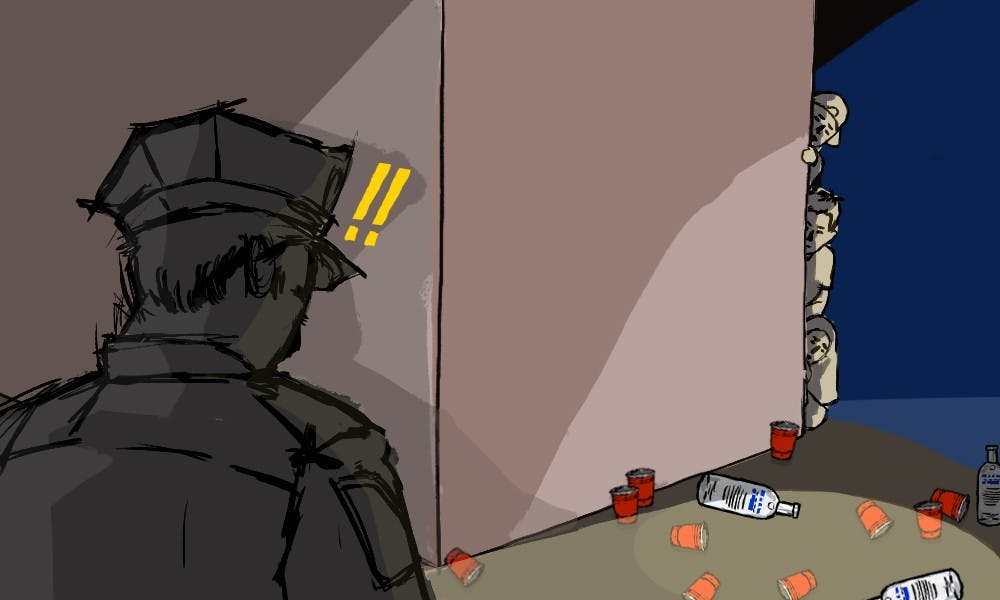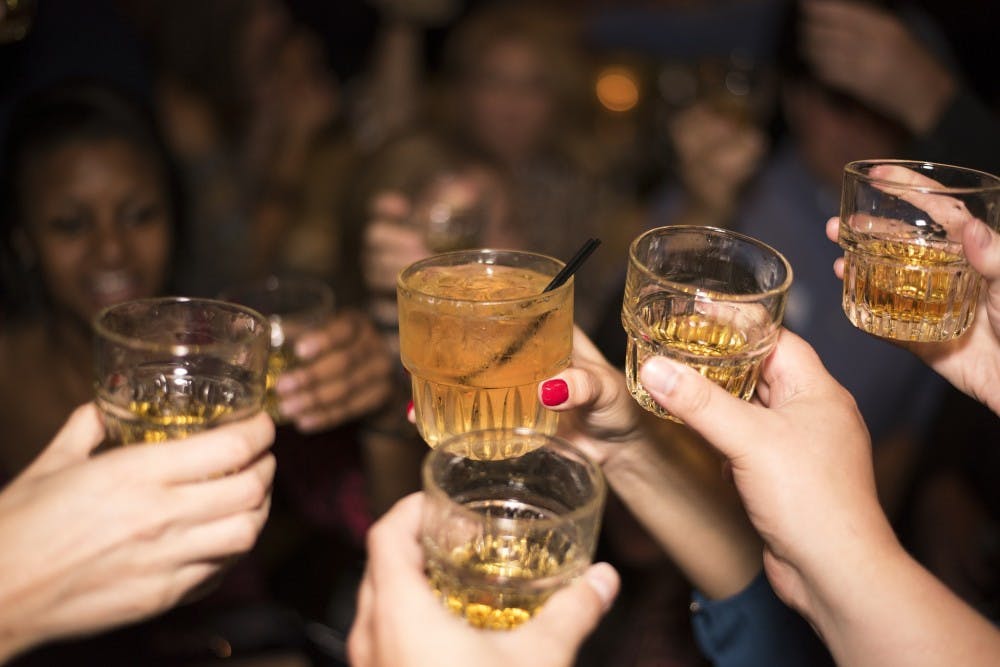
I’ve heard a lot of discussion the last few weeks dealing with the recent decision to ban hard liquor at fraternity parties. As usual, when it comes to issues surrounding Greek Life, outsiders tend to approach problems with preconceived notions. As a member of a fraternity, I could perhaps provide some insight into how the community has reacted thus far.
This decision likely means that binge drinking hard liquor will slip more deeply into the shadows. Even with Penn’s Medical Amnesty policy, many students will fear the consequences of calling an ambulance for an inebriated friend more than the consequences of alcohol abuse itself. Oversight of and the ability to influence behavior surrounding alcohol will elude University authorities even more glaringly. Because, after all, when did attempts to make it hard to get hard liquor actually make it hard?
Everybody is well aware of the hazardous health consequences of the binge drinking in Greek life, and it is clearly in the best interest of both the University and students to curb this epidemic. However, administrators rarely take actual steps to hamper Greek life because former members of fraternities and sororities are some of Penn’s biggest donors. That is why decisions like this tend to come from actual Greek bodies, like the North American Interfraternity Conference.
As Lisa C. Johnson, the former managing director of the Learning Collaborative on High-Risk Drinking said in a 2014 New York Times article, “It’s fraught with politics. It’s fraught with, ‘Are we going to lose funding from alumni who value the traditions?’ Also, it’s complex because Greek houses may be owned by the fraternities, not the university.”
Alcohol abuse is undeniably a serious problem on college campuses. Nearly 2000 students “die every year of alcohol-related causes” with “600,000 injured while drunk, and nearly 100,000 … victims of alcohol-influenced sexual assaults.” And a shocking “[o]ne in four say their academic performance has suffered from drinking, all according to the National Institute on Alcohol Abuse and Alcoholism.” The rates of alcohol abuse at colleges seems not to have changed even after the drinking age was raised in the mid 1980s, with the rate of binge drinking remaining a frightening 40 percent among college students.
Many of our parents who were over 18 but younger than 21 before the mid-1980s still enjoyed drinking legally. This all changed when the drinking age was raised to 21. Thanks primarily to the lobbying efforts of Mothers Against Drunk Driving, the age for purchase and public possession of alcohol was raised to 21 years of age in October 1986.
Any states that chose to defy this would lose 10 percent of its apportionment of federal highway funds. MADD’s efforts seem to have had a significant impact on the dangerous culture of drinking and driving, with far fewer teenagers, and also fewer adults, risking driving after drinking even one drink, let alone while inebriated. In fact, “MADD was so successful that it reached its goal for 2000 (to reduce alcohol-related deaths by 20 percent) in 1997.”
However, if the primary motivation to raise the drinking age to 21 were to curb drunk driving, this was never truly relevant to urban campuses like Penn in the first place, where students rarely have cars anyway.

Is prohibition ever actually a winning strategy to reduce non-vehicular related alcohol abuse? Anecdotally, it seems that there was less “pregaming” and binge drinking when the drinking age was lower in the United States, a phenomenon that would be consistent with international comparisons.
When it comes to alcohol and young people, America seems to have more in common with a nanny state like Saudi Arabia that outlaws alcohol altogether than our closer cultural brethren in Berlin, London, and Paris. According to the World Health Organization, the lower drinking age in European countries seems to lead to more responsible consumption with only roughly 10 percent of European youth drinking to intoxication “while in the United States almost half of all drinking occasions result in intoxication”.
Just from observing my peers at Penn, I find that students who've grown up abroad and have been around alcohol since their teenage years are responsible drinkers, especially compared to students who had their first beer during New Student Orientation.
Moreover, evidence from our own nation’s years of Prohibition corroborates evidence from countries that ban alcohol altogether: People will always find a way to drink alcohol.
Prohibition didn’t work in the 1920s; it won't work in 2018 at Penn.

SPENCER SWANSON is a College sophomore from London, studying philosophy, politics, and economics. His email address is sswanson@sas.upenn.edu.
The Daily Pennsylvanian is an independent, student-run newspaper. Please consider making a donation to support the coverage that shapes the University. Your generosity ensures a future of strong journalism at Penn.
Donate




